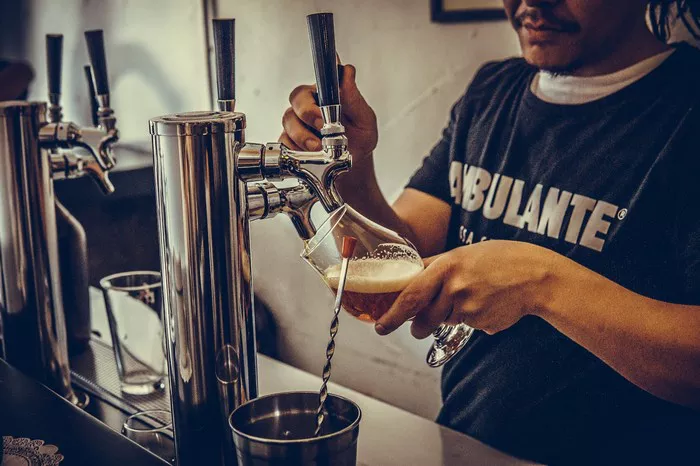Beer, with its rich history and diverse flavors, has remained a beloved beverage across cultures and time periods. Its popularity spans centuries, continents, and social classes. But what exactly contributes to this enduring appeal? From its cultural significance to its social role, and even its versatility in taste, the reasons behind why beer is so popular are multifaceted and deeply ingrained in human history and society.
Historical Roots: A Foundation of Tradition and Culture
To comprehend why beer is so popular today, delving into its historical roots provides invaluable insights. Beer production dates back thousands of years, with evidence of brewing found in ancient Mesopotamia and Egypt. This ancient beverage was often consumed for both nourishment and ritualistic purposes. Its evolution from a basic fermented grain mixture to the vast array of styles and flavors we know today reflects the integration of beer into various cultures worldwide.
The brewing process itself has been refined over centuries, with each culture contributing its techniques and ingredients. From the Germans’ Reinheitsgebot purity law to the Belgian Trappist monks’ traditional brewing methods, beer’s historical legacy intertwines with cultural practices and regional identities. This historical significance and cultural integration have cemented beer’s place in society, contributing significantly to its ongoing popularity.
Social Connection: Beer as a Unifier and Social Lubricant
Beer’s popularity isn’t solely based on its taste; it’s also deeply intertwined with its role in social interactions. The communal aspect of sharing a beer transcends borders and generations. Whether it’s a casual gathering with friends at a local pub or a festive celebration at a cultural event, beer often serves as a social lubricant, fostering connections and camaraderie among people.
The relaxed ambiance created by enjoying a pint together encourages conversation and bonding. It provides a platform for individuals to unwind, share stories, and forge friendships. This social aspect, coupled with its accessibility across various demographics, reinforces why beer is so popular—it’s a beverage that brings people together, irrespective of backgrounds or social status.
Diversity in Flavor: Catering to Varied Palates
Beer’s popularity is also attributed to its incredible diversity in flavor profiles. From the hoppy bitterness of an IPA to the malty sweetness of a stout, the range of tastes available caters to a broad spectrum of preferences. This diversity allows individuals to explore and find beers that align with their unique tastes, contributing to its widespread appeal.
Furthermore, the craft beer revolution has significantly expanded this diversity. Craft breweries experiment with unconventional ingredients and brewing methods, creating innovative and distinct flavors that captivate beer enthusiasts. The constant evolution and introduction of new styles ensure that there’s always something fresh and exciting in the world of beer, drawing in both seasoned aficionados and newcomers alike.
See Also: Why does beer upset my stomach?
Cultural Symbolism: Beer as a Symbol of Celebration and Tradition
Beer’s association with celebrations and traditions further solidifies its popularity. Across many cultures, beer plays a central role in rituals, ceremonies, and festivities. Whether it’s Oktoberfest in Germany, St. Patrick’s Day in Ireland, or religious ceremonies in various cultures, beer is often an integral part of these celebrations, symbolizing joy, abundance, and community.
Moreover, its presence in pop culture, literature, and art has elevated beer to an iconic status, embedding it firmly within societal norms. Advertisements, movies, and music often depict beer as a symbol of relaxation, enjoyment, and conviviality, perpetuating its allure and contributing to its widespread popularity.
Economic Impact: Driving Force Behind Beer’s Global Presence
The economic impact of beer cannot be understated when considering its popularity. The brewing industry, encompassing both large-scale breweries and small craft operations, contributes significantly to local and global economies. It generates employment, stimulates tourism, and fosters trade relations between countries.
Additionally, the accessibility and affordability of beer compared to other alcoholic beverages make it a preferred choice for many consumers. Its relatively lower cost, coupled with its widespread availability, makes beer a go-to option for individuals seeking a refreshing and enjoyable drink, further bolstering its popularity worldwide.
Health Benefits and Moderation: Factors in Sustaining Popularity
Contrary to popular belief, moderate beer consumption has been linked to potential health benefits. Studies suggest that moderate consumption may contribute to heart health, improve bone density, and even offer certain nutritional benefits due to its content of vitamins, minerals, and antioxidants.
However, it’s crucial to note that excessive consumption can lead to adverse health effects. Responsible consumption and moderation play a vital role in sustaining beer’s popularity. Understanding and promoting responsible drinking practices are essential to ensuring that the enjoyment of beer remains a positive aspect of social and cultural interactions.
Conclusion
In conclusion, the reasons behind why beer is so popular are multifaceted and deeply rooted in history, culture, and social connections. Its ability to bring people together, diverse flavor profiles, cultural symbolism, economic impact, and even potential health benefits contribute to its enduring appeal. Beer isn’t merely a beverage; it’s a symbol of tradition, celebration, and community, transcending boundaries and uniting people worldwide. Its popularity remains unwavering, reflecting its integral place in human society and its ongoing evolution as a beloved drink for generations to come.


